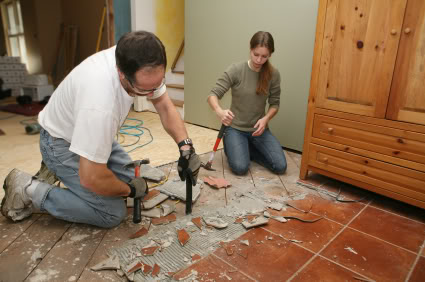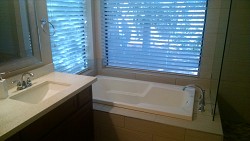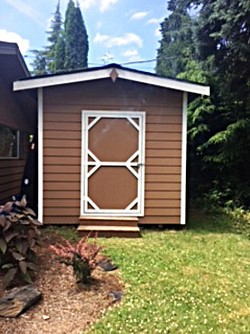Renovation Costs Checklist
“How much will it cost?” is the first question most people ask when considering a home remodel. And the fact is, you won’t get a really accurate picture of renovation costs until you receive job bids from a few local contractors – and that comes only after you have detailed job specifications for the project. But it’s important to start the planning process by understanding the ballpark costs for each item on your wish list. Often, a single item or change can involve several different costs.
Renovation Costs to Consider

Talk to a designer to learn about fees and options.
Design Fees
Professional design help is a good idea for all but the simplest, makeover-type remodels. Talk with local designers who specialize in your type of project (e.g. kitchen designer for a kitchen remodel; architect for major renovations) to learn about fees and options.
Access
Getting to the project site impacts cost; remodels to first-floor rooms are generally easier and a little cheaper than those on upper floors, attics or basements.
Demolition
The cost of tearing out the old to make way for the new depends on what the “old” is. For example, plaster walls and glued-down carpeting are more expensive to demo than drywall and sheet vinyl.

Don't forget to include tear out costs in your renovation estimate.
Opening Up/Removing Walls
Partition (non-load-bearing) walls are easy from a structural standpoint, while changes to load-bearing walls are much more involved. Any wall removal comes with collateral costs for patching the ceiling and floor and moving electrical, plumbing and HVAC elements, as applicable.
Windows and Doors
Adding or enlarging windows and doors requires new structural framing and new interior and exterior trimwork and exterior flashing. Replacing old units with new ones of the same size is much less expensive.
Plumbing and HVAC
Moving mechanicals or plumbing can add significantly to renovation costs, while electrical changes and upgrades are relatively easy and inexpensive.
Materials
You can do your own research and pricing of most remodeling materials, from bathroom fixtures and kitchen cabinets to flooring and lighting. Be sure to add about 10% to bulk materials, like flooring and building supplies, to account for mistakes and cutoffs. Stain-grade wood trim and other details are much costlier than paint-grade and wood alternatives.

Include materials, permit fees and any structural changes in your calculations.
Permits
Permit fees are seldom a significant part of renovation costs, but they can be surprisingly high in some areas. Call your city’s building department for information.
What’s the Next Step?
Once you’ve narrowed your wish list to at least fit within the range of your budget, it’s time to talk with a professional. Many remodeling contractors are happy to meet with prospective clients (you) for a free initial consultation. If you have a good idea of what you’d like to do, the contractor can probably give you a ballpark estimate (not an accurate bid figure) for the renovation costs. This can be a valuable reality check before you head onto the next phase of detailed design work.
Get an idea of how to price a kitchen remodel or a basement remodeling job. Talk to potential designers and remodelers.
Find a qualified remodeler who can advise you on costs.
Updated July 18, 2018.
Looking for a Pro? Call us (866) 441-6648

Remodeling Average Costs
Remodeling Contractors Experiences

A Modern, Nice-looking Bathroom Remodel Also Adds Value To Our Home

Can’t Find A Prefab Shed You Like? Try Custom Carpentry Instead



